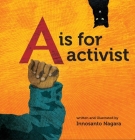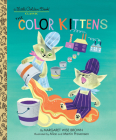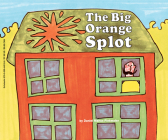We're moving on Tuesday, and my life is a swirl of boxes and packing tape, discombobulated children and frustration with contractors. Happily, my dear friend Emily, who most recently guest blogged for us a couple of weeks ago about reading to her newborn, has written another most excellent post for this week:
Hi again Annie,
One of the pleasures of having a new baby, aside from the tremendous new love in one’s life, is the influx of books from friends and well-wishers. Among the classics we've received – The Snowy Day, Make Way For Ducklings – are a few wingy selections. Three of these trippy, singular books are the subject of today’s post.

Our friend Bronwen gave us Innosanto Nagara’s
A is for Activist – a radical left wing alphabet primer sure to have your baby rising up against tyranny in no time. Imagine how rousing it is to read Nagara’s ode to the letter J:
“J is for Justice!
Yay for Justice!
Jia-Jing Jiang.
Juanita. Jamal.
Justice for the Janitors,
Justice for all!”
The next letter comes with a thoughtful reminder:
“Kings are fine for storytime.
Knights are fun to play.
But when we make decisions
we will choose the people’s way!”
My daughter Alice is still young enough that she inadvertently throws one of her little fists up above her head on occasion. At least I thought it was inadvertent at first; now I suspect she’s preparing to fight the power.

The Color Kittens, illustrated in bright, pastel hues by Alice and Martin Provensen, is a lesser-known book by the inimitable Margaret Wise Brown. In it, two kittens named Brush and Hush mix buckets of blue, yellow, and red paint to create “all the colors in the world.” The text shifts back and forth from prose to verse, for instance when Brush and Hush try to create green: “Green as cats’ eyes / Green as grass / By streams of water / Green as glass.” At one point the color kittens fall asleep and then things really get trippy. In their dream, their colors rush together as they imagine “a purple land / In a pale pink sea / Where apples fell / From a golden tree / And then a world of Easter eggs / That danced about on little short legs.” The plot of this book is less emotional than the Margaret Wise Brown of, say, The Runaway Bunny, but the linguistic rhythms are as inexplicably mesmerizing as those in Goodnight Moon. It’s a charming addition to Alice’s growing library.

Growing up, our own loopy family favorite was The Big Orange Splot by Daniel Manus Pinkwater, a book originally published in 1977. In it, a mustachioed man named Plumbean lives “on a street where all the houses were the same” until a seagull mysteriously drops a can of orange paint on his roof. Implored by his neighbors to paint over the splot, he decides instead to paint the house of his dreams by night. In the morning, his neighbors come out of their monotonous brown houses and behold Plumbean’s: “It was like a jungle. It was like an explosion.” The neighbors talk among themselves, saying “Plumbean has gushed his mush, lost his marbles, and slipped his hawser” – lines that are a joy to read aloud. One by one, they stay up all night in Plumbean’s garden, trying to convince him to return his house to its original, drab form, and one by one, they decide to paint their own houses to “look like all their dreams.” The results, illustrated in groovy, nineteen-seventies style, are magic.
My hope for Alice is, of course, that she will live a life that looks like all her dreams, as weird and wild as they might be. These books will surely encourage her in that direction.
Love, Emily
And love from me, crazed as I am!
Annie

No comments:
Post a Comment